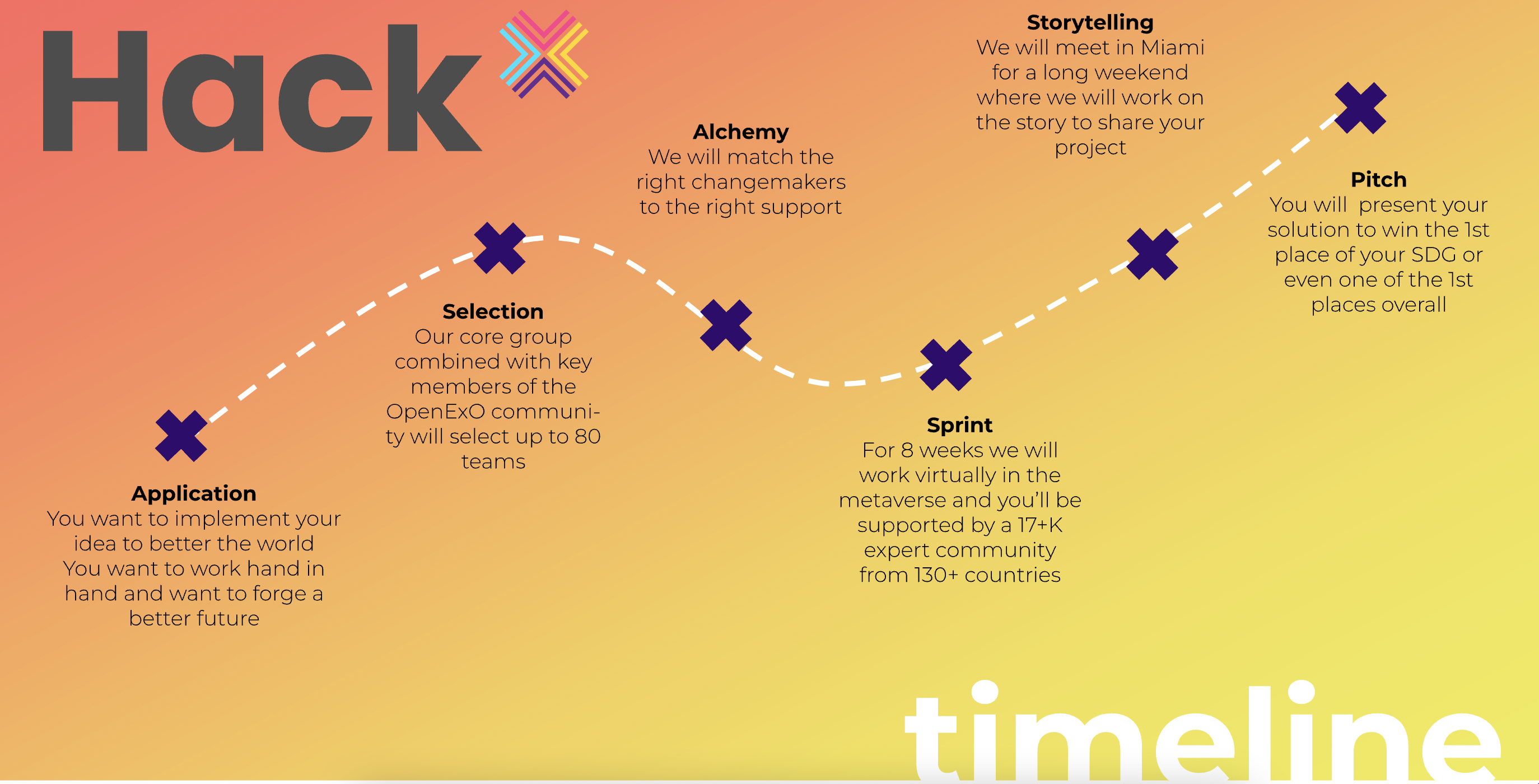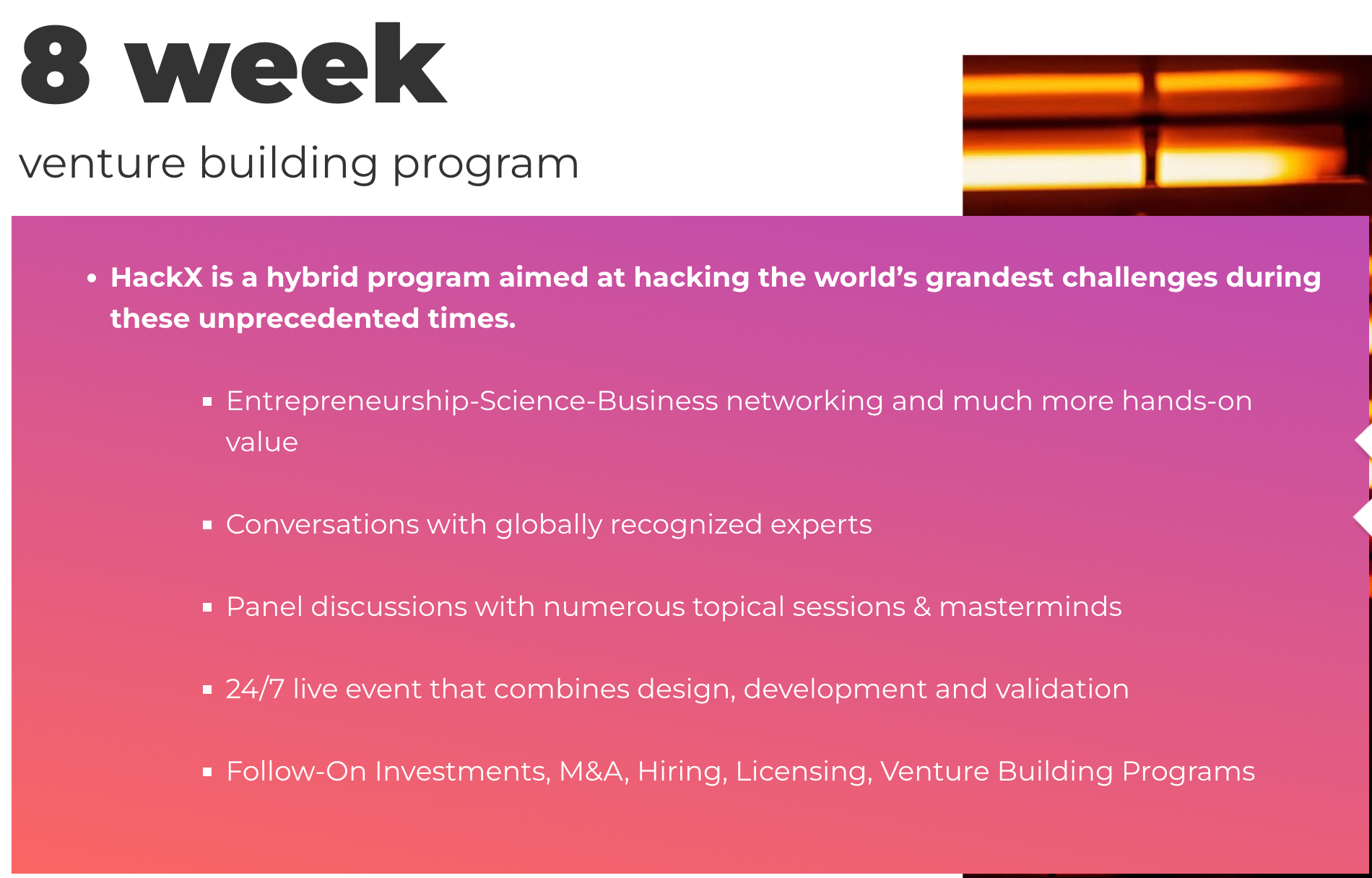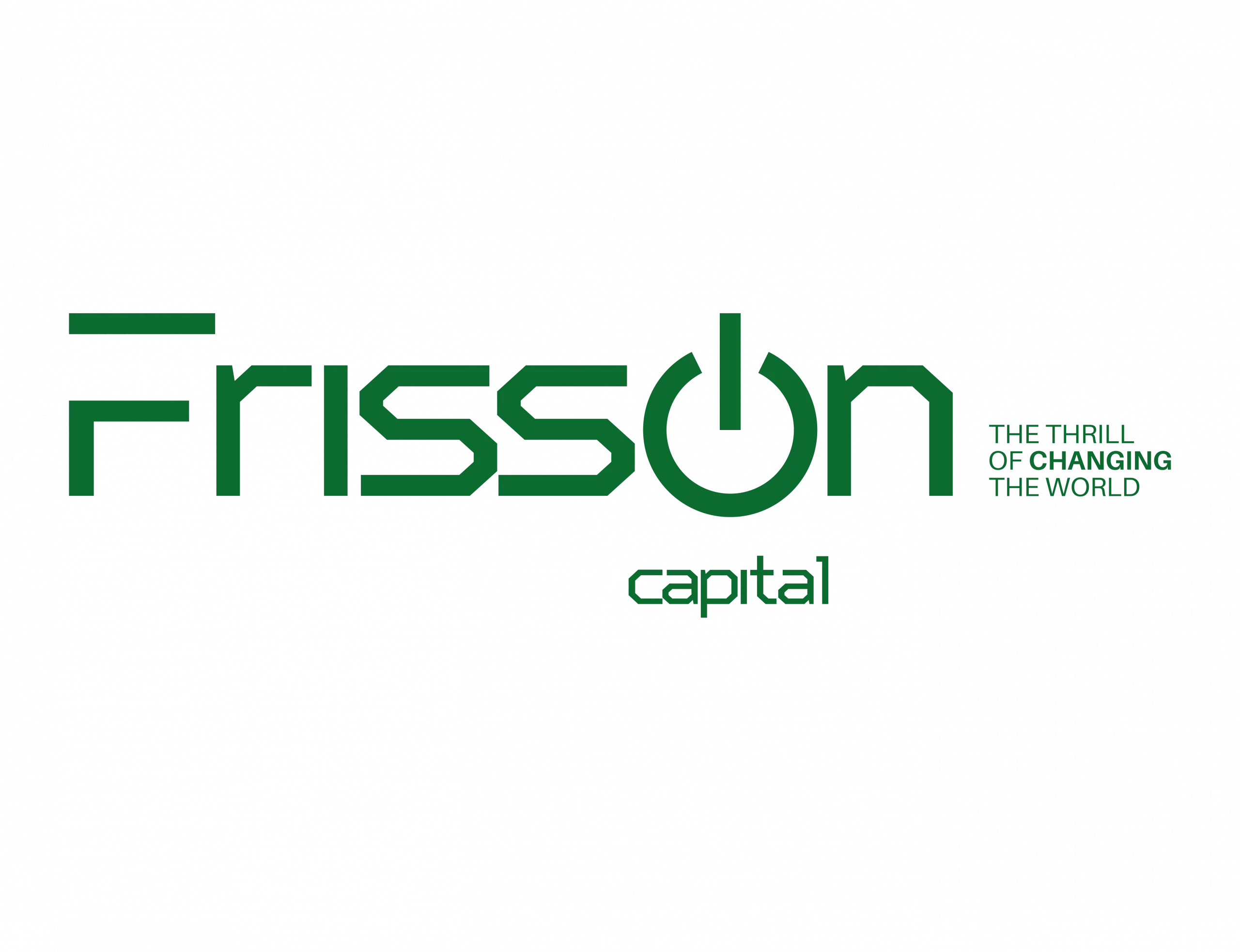HackX is a system that seeks to return to that nature where curiosity and discomfort with the status quo are sought to solve in ten years through collaboration, with the Sustainable Development Goals.
In a famous letter addressed to Ludovico Sforza (The Moor), Leonardo da Vinci presents himself as someone capable of building an infinite number of machines, specifically for attack and defense.
In his text, he mentions that the instruments of war invented so far “differ in nothing from common practice” and offers to show him, among other things: Plans for light and strong bridges that can be loaded very easy; how to build an infinite number of ladders; plans for making cannons, very convenient and easy to transport, with which so could throw small pebbles, almost in the manner of the hail; plans for ships that can withstand the fire of the heaviest cannons, and gunpowder and smoke, among others, and “in short, I can supply, as far as the various circumstances may require, an infinite number of machines for attack and defense.”
So sure was da Vinci of the creations that he expressed in his letter, “And if any of the mentioned things should seem impossible or impracticable to anyone, I offer to demonstrate them in your park or anywhere your Excellency pleases.”
Undeniable is the genius of da Vinci, who understood the problems that Ludovico faced during the war against France in 1495 and a vision that led him to understand and coexist in the world of science and art, breaking traditional patterns of thought. His irrepressible curiosity led him to many strange conclusions and designs of inventions that have been developed and improved over the centuries.
Differing from common practice and fully understanding the problems to find the best solutions are two lessons that today’s executives and governments must consider. Understanding the problem is a relevant step in finding the best solution. The more time spent understanding the problem, the easier it will be to find a solution, and the more likely it will be simpler and faster to implement than the solution taken at first impulse.
An example of this happened at NASA: During the space race, scientists faced the problem of writing in space, where the lack of gravity prevented the ink from falling onto the paper. Scientists undertook a whole research and development process and invested a few million dollars in developing a pen with a small motor that pumps ink onto the paper. The Russians decided to use pencils.
This example demonstrates that jumping straight to the solution can lead to cost overruns that generate either partial solutions or exaggerated remedies in much more time than it would take to understand what the problem is. So Kelly Johnson, Lockheed’s engineer in the U.S. Navy, stamped it in the beginning to avoid unnecessary complexity: KISS (Keep It Simple, Stupid).
The point is that every time you hear about a problem, the first attitude is to tune into solution mode, i.e., to find a solution to the problem as quickly as possible, without first having analyzed it carefully. Taking the time to do so leads to a definitive solution. Faster and simpler than the first solution taken instantly, which becomes a palliative, not a remedy.
Albert Einstein believed that the quality of a solution is in proportion to the ability to identify and understand the problem you are trying to solve. He expressed it in the following sentence: “If I had one hour to solve a problem, I would spend 55 minutes thinking about the problem and five minutes thinking about solutions“.
To fully understand a problem, you need enough time to think about it in depth.
New Year’s Resolutions
Corporations and governments spend part of the last quarter of the year budgeting their plans and projects for the following year. Generally, the results of this exercise are reflected in a list of their estimated budgets. However, these projects, or part of them, are not always aimed at solving an identified problem.
Ideally, at least two other columns need to be included in this list: one to describe what problem the project intends to solve, and the other to state for whom or for what area within the organization the problem is intended to be solved. This ensures that the problems are aligned with the vision and strategy of the president of the organization to ensure that these are the problems that need to be solved; on the other hand, it helps to prioritize the problems concerning corporate objectives and define the possibility that the same project solves more than one problem.
Looking at the problems, it is easier to see whether the projects listed are the best solution to the problem at hand. Only then can goals be set for next year’s operations.
Now let’s imagine that we are making our resolutions to solve not the problems of a corporation but complex global problems; the process would be the same: know the problems before giving the solutions, to set targets, as the UN has done in setting the Sustainable Development Goals (SDGs). Why is it necessary to set targets when solving complex global problems? There are five reasons:
- Targets give direction and focus
- They are easy to communicate
- They encourage teamwork
- They allow progress to be measured to improve results
- They create peer pressure
Adopting global goals helps individuals, organizations, and governments worldwide agree on the direction and focus on what matters for our future. Having clear objectives allows us to concentrate attention on the most urgent problems and can motivate the participation of all types of actors including community and political leaders, international organizations, foundations, NGOs, and religious groups, among others.
Similarly, having clear objectives, targets and indicators allow them to be measured and allows communities to pressure governments and companies to act; to question them on their commitment to the goals they have signed up for and their progress relative to other countries.
While planning is super important to be clear about which projects are priorities for the coming year, we must not lose sight of a relevant aspect of planning, the “why?”
The Power of Innovation
Focusing on the problem rather than the solution is a motivator for innovation, which is much more than a buzzword. Today’s innovators see themselves less as researchers and inventors and more as composers, orchestrators, and cross-pollinators. A study by Deloitte on innovation, conducted among more than 400 business, technology, and innovation leaders across six U.S. industries, found that new blends or applications of known winners – those that drive the overall success of their organizations – are a common recipe for innovation success.
In the study, the question of what is innovation is? Some thought of it as amazing epiphanies, new to the world; multi-sentence (and even some multi-paragraph) answers were frequent; and others focused on specific parameters. In the end, two characteristics persisted in the commonality of responses that can be learned and emulated:
- Novelty (but not necessarily new to the world)
- Improvement (measured economically)
Regardless that innovation initiatives today come in a variety of shapes and sizes, each with its cultural quirks and curiosities.
Breakthrough discoveries and inventions are often the purviews of corporate research and development, which translates into capital-intensive cost centers. Sathish Muthukrishnan, Chief Information Data, and Digital Officer at Ally Financial put it simply:
“We had to understand that innovation is not about creating the next Post-it®, but incremental changes and that much of our innovation comes from experimenting with the new (customers, use cases, or technology) and the old (rewriting what we’ve done before).“
The second critical component of innovation is its ability to deliver a measurable improvement over a legacy alternative. “Often, what is classified as an innovation can be more accurately described as a new source of profitable growth,” says Renato Mazziero, vice president of Experience and Innovation at Thrivent. Or as one innovation leader notes, “We’ve pivoted to a stronger foundation in strategic priorities and focus areas, rather than exploring the world from scratch so we can make a difference to the bottom line.”
The bottom line is that while inventors turn money into new ideas, innovators turn new ideas into money. Ultimately, innovations are measured by their financial contributions, not by their patents or design awards. Or, as Steve Jobs said, “true artists sail.”
Organizations innovate for their reasons, but most reasoning is grouped into two stances: defensive or offensive. Defensive postures focus on protecting the legacy organization with a conservative and competitive outlook concerned about costs, efficiency, and the possibility of being “eaten” by competitors. Offensive postures focus on transforming the organization, having a pioneering and creative vision for the future, seeking to deliver differentiated growth and financial performance, or changing the culture and brand of an organization.
A Deloitte study revealed that the most common reason organizations embark on innovation (27%) is to gain a cost or efficiency advantage, a primarily defensive posture. However, high-growth companies (those that grew 20% or more in the last year) primarily pursue innovation to improve financial performance, a proven offensive posture.
And What About Entrepreneurs?
If anything is changing worldwide, the economy is thanks to the growing reliance on information technologies, data analysis, and automation. Today there is talk of a post-industrial economy, especially in the more developed nations, identified as the “Knowledge Economy” that thrives on innovation, research, and rapid technological advances. It is an economy characterized by more and more employees with special knowledge or skills composed more of service industries and jobs that require thinking and analyzing data. The most valuable assets are intangible assets such as patents, intellectual property rights, specialized hardware or software, or proprietary processes.
It is an economy that seeks to generate wealth and value using information that it transforms into knowledge; that relies on and thrives on innovation, research, and rapid technological advances. The overwhelming majority of workers in the knowledge economy are extremely computer literate and skilled at creating.
The use of new technologies in this economy has also generated an explosion of opportunities. The generation of knowledge through the ever-increasing amount of information available has allowed the emergence of entrepreneurs willing to take advantage of these opportunities. These new entrepreneurs are innovative, attentive to new technologies, combine the knowledge of science with soft skills to lead organizations, are very attached to processes, and work on metrics, KPIs (Key Performance Indicators), and OKRs (Objectives and Key Results)”.
EY Entrepreneur of The Year® award winners in 2019, in addition to creating nearly 14.1 million jobs, are estimated to have played a pivotal role in the economy. According to EY data, 25% stimulate economic growth; 15% catalyze innovation; 23% create jobs; 13% disrupt the status quo; 16% benefit the community, and 8% introduce new products.
The world is changing rapidly, thanks in large part to science and technology. Michael Porter, Harvard Business School professor and creator of the “Five Forces” model for business analysis, argues that in today’s economy, a company’s ability to develop and maintain a competitive advantage in the marketplace increasingly depends on its ability to adapt quickly to a constantly changing world through the use of continuous innovation in its business processes and systems. Moreover, facing this world brings with it the need to solve global problems.

What’s coming shortly?
In the United States, the Innovation Corps (I-Corps™) program has been developed by the National Science Foundation (NSF) to support the ability to exploit the economic and social potential of projects born in science and engineering and to generate benefits at multiple levels across the national innovation ecosystem.
This program facilitates the discovery of industrial needs. It deploys a technology development plan and a strategy for launching partner companies, fostering the integration of teams led by experienced scientists who are new to the business world. In addition, I-Corps provides training in an evidence-based framework widely used in the start-up community. Teams interact directly with industrial scientists specializing in how to capitalize on advanced technologies.
The program brings together the world’s leading academic and biomedical communities. It provides the national laboratory infrastructure to foster entrepreneurial leadership that thrives in the fast-paced, super-competitive, high-tech economies of the future.
Since its launch in FY 2012, NSF I-Corps has trained more than 5,700 participants. In addition, it partnered with the National Institute of Health (NIH) in 2015, and with the Department of Energy, in 2016.
However, there is still a long way to take advantage of human curiosity and the Knowledge Economy. The problem is that we need to change the human chip to reawaken childlike curiosity.
In a recent interview, the astrophysicist Neil deGrasse Tyson maintained that an adult scientist is a child who never grew up. He also criticized the tendency of parents to repress the inquisitive attitude of their children when, for example, they start playing with objects that can be broken, or when they cause disorder and make noise. According to him, those parents abort experiments in physics, biology, acoustics, etc., thus killing their interest in science. “The child should learn that science is a way of understanding the world, a way of asking a question and then finding an answer” he said.
Considering entrepreneurship as a way of solving global problems and the need to break with a system that does not facilitate the disruption with the established in science and research, options like HackX have emerged. HackX is a system that seeks to return to that nature where curiosity and discomfort with the status quo are sought to solve in ten years through collaboration, with the Sustainable Development Goals. HackX is one of those movements with offensive postures focused on transformation, with a pioneering and creative vision of the future, which seeks to change the culture of problem-solving. We would say that it is the de Vinci of the current era.

HackX will launch an innovative 8-week venture-building program featuring conversations with world-renowned experts and panel discussions with numerous topical sessions and masterminds in the coming weeks. Also, throughout the event, which will run for eight continuous days 24/7 will combine design with development and validation and arrange follow-on investments, mergers, acquisitions, hiring, licensing, and venture building programs.
The best solutions play to win, not to lose. That’s what HackX is all about.
Learn more about HackX: https://hackx.space








